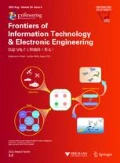Abstract
A model predictive controller was designed in this study for a single supply chain unit. A demand model was described using an autoregressive integrated moving average (ARIMA) model, one that is identified on-line to forecast the future demand. Feedback was used to modify the demand prediction, and profit was chosen as the control objective. To imitate reality, the purchase price was assumed to be a piecewise linear form, whereby the control objective became a nonlinear problem. In addition, a genetic algorithm was introduced to solve the problem. Constraints were put on the predictive inventory to control the inventory fluctuation, that is, the bullwhip effect was controllable. The model predictive control (MPC) method was compared with the order-up-to-level (OUL) method in simulations. The results revealed that using the MPC method can result in more profit and make the bullwhip effect controllable.
Similar content being viewed by others
References
Beamon, B.M., 1998. Supply chain design and analysis: models and methods. Int. J. Prod. Econ., 55(3):281–294. [doi:10.1016/S0925-5273(98)00079-6]
Box, G.E.P., Jenkins, G.M., Reinsel, G.C., 1978. Time Series Analysis: Forecasting and Control. John Wiley, San Francisco, USA.
Camacho, E.F., Bordons, C., 1995. Model Predictive Control in the Process Industry. Springer-Verlag, London, UK.
Chu, F., 2008. Analyzing and forecasting tourism demand with ARAR algorithm. Tourism Manag., 29(6):1185–1196. [doi:10.1016/j.tourman.2008.02.020]
Erdogdu, E., 2007. Electricity demand analysis using cointegration and ARIMA modeling: a case study of Turkey. Energy Policy, 35(2):1129–1146. [doi:10.1016/j.enpol.2006.02.013]
Han, K., Zhao, J., Zhu, Y., Xu, Z., Qian, J., 2008. MPC with on-line disturbance model estimation and its application to PTA solvent dehydration tower. J. Chem. Ind. Eng., 59(7):1657–1664 (in Chinese).
Lin, P., Wong, D.S., Jang, S., Shieh, S., Chu, J.Z., 2004. Controller design and reduction of bullwhip for a model supply chain system using z-transform analysis. J. Process Control, 14(5):487–499. [doi:10.1016/j.jprocont.2003.09.005]
Lin, P., Jang, S., Wong, D.S., 2005. Predictive control of a decentralized supply chain unit. Ind. Eng. Chem. Res., 44(24):9120–9128. [doi:10.1021/ie0489610]
Maciejowski, J.M., 2002. Predictive Control with Constraints. Person Education Limited, Edinburgh Gate, UK.
Min, H., Zhou, G., 2002. Supply chain modeling: past, present and future. Comput. Ind. Eng., 43(1–2):231–249. [doi:10.1016/S0360-8352(02)00066-9]
Morari, M., Lee, J.H., 1999. Model predictive control: past, present and future. Comput. Chem. Eng., 23(4–5):667–682. [doi:10.1016/S0098-1354(98)00301-9]
Niu, Y., Qian, X., Ren, J., 2007. Application of ARIMA model in semiconductor demand forecasting. Semicond. Technol., 32(5):391–393 (in Chinese).
Ohshima, M., Ohno, H., Hashimoto, L., Sasajima, M., Maejima, M., Tsuto, K., Ogawa, T., 1995. Model predictive control with adaptive disturbance prediction and its application to fatty acid distillation column control. J. Process Control, 5(1):41–48. [doi:10.1016/0959-1524(95)95944-9]
Pannocchia, C., Rawlings, J.B., 2003. Disturbance models for offset-free model-predictive control. AIChE J., 49(2): 426–437. [doi:10.1002/aic.690490213]
Perea-López, E., Ydstie, B.E., Grossmann, I.E., 2003. A model predictive control strategy for supply chain optimization. Comput. Chem. Eng., 27(8–9):1201–1218. [doi:10.1016/S0098-1354(03)00047-4]
Qian, J., Zhao, J., Xu, Z., 2007. Predictive Control. Chemical Industry Press, Beijing, China (in Chinese).
Sarimveis, H., Patrinos, P., Tarantilis, C.D., Kiranoudis, C.T., 2008. Dynamic modeling and control of supply chain systems: a review. Comput. Oper. Res., 35(11):3530–3561. [doi:10.1016/j.cor.2007.01.017]
Seferlis, P., Giannelos, N.F., 2004. A two-layered optimization-based control strategy for multi-echelon supply chain networks. Comput. Chem. Eng., 28(5):799–809. [doi:10.1016/j.compchemeng.2004.02.022]
Wang, W., Rivera, D.E., 2008. Model predictive control for tactical decision-making in semiconductor manufacturing supply chain management. IEEE Trans. Control Syst. Technol., 16(5):841–855. [doi:10.1109/TCST.2007.916327]
Wang, W., Rivera, D.E., Kempf, K.G., 2007. Model predictive control strategies for supply chain management in semiconductor manufacturing. Int. J. Prod. Econ., 107(1): 56–77. [doi:10.1016/j.ijpe.2006.05.013]
Author information
Authors and Affiliations
Corresponding author
Additional information
Project supported by the National Natural Science Foundation of China (Nos. 60804023, 60934007, and 60974007), and the National Basic Research Program (973) of China (No. 2009CB320603)
Rights and permissions
About this article
Cite this article
Niu, J., Xu, Zh., Zhao, J. et al. Model predictive control with an on-line identification model of a supply chain unit. J. Zhejiang Univ. - Sci. C 11, 394–400 (2010). https://doi.org/10.1631/jzus.C0910270
Received:
Accepted:
Published:
Issue Date:
DOI: https://doi.org/10.1631/jzus.C0910270
Key words
- Supply chain
- Model predictive control
- On-line identification
- Optimization with constraint
- Piecewise linear price




